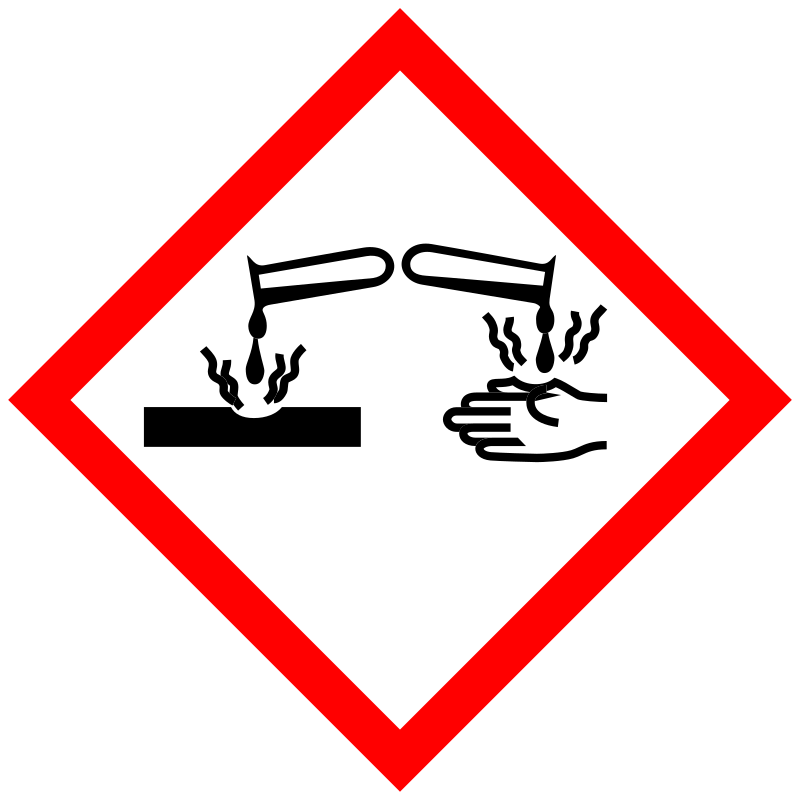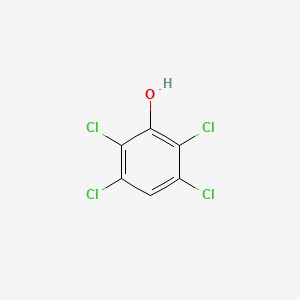D0638 | 2,3,5,6-tetrachlorophenol
| Toxicity | Dose | Time | Species | Model | Method | Action | Positive criterion | Reference |
|---|---|---|---|---|---|---|---|---|
| MEMBRANE POTENTIAL | 6.42±2.38 | human | qHTS-HepG2 | MMP assay | decrease | IC50 | 163 | |
| MEMBRANE POTENTIAL | 8.91 | human | HepG2 | MMP assay | decrease | IC50 | 163 | |
| MEMBRANE POTENTIAL | 9.20±2.96 | rat | hepatocytes | MMP assay | decrease | IC50 | 163 | |
| Pictogram | Signal | Statements | Precautionary Statement Codes |
|---|---|---|---|
   |
Danger |
Aggregated GHS information provided by 42 companies from 3 notifications to the ECHA C&L Inventory. Each notification may be associated with multiple companies. Reported as not meeting GHS hazard criteria by 1 of 42 companies. For more detailed information, please visit ECHA C&L website Of the 2 notification(s) provided by 41 of 42 companies with hazard statement code(s): H301 (100%): Toxic if swallowed [Danger Acute toxicity, oral] H315 (100%): Causes skin irritation [Warning Skin corrosion/irritation] H318 (100%): Causes serious eye damage [Danger Serious eye damage/eye irritation] H335 (100%): May cause respiratory irritation [Warning Specific target organ toxicity, single exposure Respiratory tract irritation] H413 (92.68%): May cause long lasting harmful effects to aquatic life [Hazardous to the aquatic environment, long-term hazard] Information may vary between notifications depending on impurities, additives, and other factors. The percentage value in parenthesis indicates the notified classification ratio from companies that provide hazard codes. Only hazard codes with percentage values above 10% are shown. |
P261, P264, P270, P271, P273, P280, P301+P310, P302+P352, P304+P340, P305+P351+P338, P310, P312, P321, P330, P332+P313, P362, P403+P233, P405, and P501; (The corresponding statement to each P-code can be found at the GHS Classification page.) |
| Organism | Test type | Route | Dose (normalized dose) | Effect | Source |
|---|---|---|---|---|---|
| gerbil | LD50 | oral | 979mg/kg (979mg/kg) | Archives of Toxicology. Vol. 40, Pg. 63, 1978. | |
| mouse | LD50 | intraperitoneal | 48mg/kg (48mg/kg) | Archives of Toxicology. Vol. 40, Pg. 63, 1978. | |
| mouse | LD50 | oral | 109mg/kg (109mg/kg) | Archives of Toxicology. Vol. 40, Pg. 63, 1978. | |
| rat | LDLo | skin | 2gm/kg (2000mg/kg) | Bulletin of Environmental Contamination and Toxicology. Vol. 31, Pg. 680, 1983. | |
| 2,3,4,6-Tetrachlorophenol (TCP) | 2,3,5,6-TETRACHLOROPHENOL | 2,3,5,6-TeCP |
| 2,3,5,6-Tetrachloro phenol | 2,3,5,6-Tetrachlorophenate | 2,3,5,6-Tetrachlorophenol 10 microg/mL in Cyclohexane |
| 2,3,5,6-Tetrachlorophenol 100 microg/mL in Cyclohexane | 2,3,5,6-Tetrachlorophenol 100 microg/mL in Methanol | 2,3,5,6-Tetrachlorophenol solution, certified reference material, 2000 mug/mL in methanol; |
| 2,3,5,6-Tetrachlorophenol, PESTANAL(R), analytical standard | 2,3,5,6-Tetrachlorophenol, analytical standard | 2,3,5,6-Tetrachlorphenol |
| 2,3,5,6-tetrakis(chloranyl)phenol | 935-95-5 | AI3-22331 |
| AKOS015850364 | BDBM92750 | BRN 2049586 |
| C-49929 | C15505 | CAS-935-95-5 |
| CCRIS 4723 | CHEBI:52048 | CHEMBL1606550 |
| CTK5H2691 | DB-057414 | DSSTox_CID_6101 |
| DSSTox_GSID_26101 | DSSTox_RID_78017 | DTXSID2026101 |
| EINECS 213-310-8 | FCH1321010 | FT-0633145 |
| HSDB 6766 | InChI=1/C6H2Cl4O/c7-2-1-3(8)5(10)6(11)4(2)9/h1,11H | KEWNKZNZRIAIAK-UHFFFAOYSA- |
| KEWNKZNZRIAIAK-UHFFFAOYSA-N | LS-1956 | NCGC00091853-01 |
| NCGC00091853-02 | NCGC00258464-01 | NSC 407823 |
| NSC-407823 | NSC407823 | Phenol, 2,3,5,6-tetrachloro- |
| Phenol,3,5,6-tetrachloro- | Q2224522 | SCHEMBL827930 |
| SW5F2W8SDJ | TR-029295 | Tox21_200910 |
| UNII-8SD098QNAH component KEWNKZNZRIAIAK-UHFFFAOYSA-N | UNII-AZ1041M258 component KEWNKZNZRIAIAK-UHFFFAOYSA-N | UNII-SW5F2W8SDJ |
| WLN: QR BG CG EG FG | ZINC1504178 |

